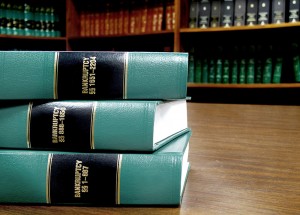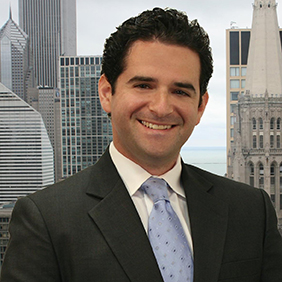- Home »
- Basics for Beginners »
- Dealing with Distress For Fun & Profit – Installment #14 – An Introduction to Chapter 11 for Unsecured Creditors: What Every Unsecured Creditor Should Know
Dealing with Distress For Fun & Profit – Installment #14 – An Introduction to Chapter 11 for Unsecured Creditors: What Every Unsecured Creditor Should Know
A written tour of business bankruptcy and its alternatives.

If you would like to read from the beginning, this series started here with a broad overview of business bankruptcy. Most recently, the series has focused on the automatic stay, where you can find the 30,000-foot view. Or you can find more specific treatment here, here and here. In this installment, we give a crash course from a particular perspective – the unsecured creditor.
When a debtor files for bankruptcy, creditors hold different types of claims or interests against the debtor’s estate. Generally, these claims fall into five buckets:
- secured claims;
- administrative claims;
- priority claims;
- general unsecured claims; and
- interests.
Much like a waterfall, §507 of the Bankruptcy Code sets forth the priority scheme for all creditors’ claims. Therefore the highest priority claims must be paid in full before the assets of the estate flow down to pay lower priority claims. Generally, creditors whose claims are secured by the estate’s assets (a/k/a, secured creditors) are in a superior position, and such claims are outside the gambit of §507 entirely. Should a chapter 11 debtor fail in its attempt to reorganize, a secured creditor may generally look to the liquidation value of its collateral for payment of its claim. For example, if an individual fails to pay their mortgage, the bank will foreclose on the property. The bank’s claim is secured by the mortgage on the home and the bank is a secured creditor. The same is true of certain business loans, such as revolving credit facilities secured by some or all of the debtor’s assets. Secured creditors are allowed interest on their claim only to the extent that they are over-secured, that is, the value of the collateral exceeds the value of their claim. Alternatively, to the extent that a secured creditor is under-secured—that is, the claim exceeds the value of the collateral securing it—that portion of the claim is considered unsecured. Allowed interest and the deemed unsecured portion of a claim can affect the amount of unsecured creditors’ recovery.
All other creditors, representing claim types 2 through 5 above, are dependent upon the residual value of the estate’s unencumbered assets for payment. The priority for payment of these claims is generally as follows:
- Spousal support obligations;
- Costs of administration (including professional fees and post-petition expenses of business operations);
- A host of unsecured claims that Congress gives special high priority (see §507 and §503), such as employee-related claims and claims held by taxing authorities; and
- General unsecured pre-petition obligations.
To the extent there is anything leftover, any remaining property reverts to the debtor’s former shareholders (in commercial cases).
As “last-in-line” creditors, general unsecured creditors might be viewed as having the most to lose should a chapter 11 debtor’s reorganization fail and may be most benefited by a thorough monitoring of the debtor’s affairs during the case.
Thinking on your Feet – Steps Unsecured Creditors Should Take Immediately Upon Notice of a Chapter 11 Filing
A. Review First-Day Motions
Upon the filing of a debtor’s bankruptcy case, the Bankruptcy Court will typically hear a series of motions filed by the debtor in possession (“DIP”) requesting certain authority that it is not automatically entitled to receive under the Bankruptcy Code. In almost all cases, some of these motions include requests to treat certain creditors’ claims differently than they might otherwise be treated by the Bankruptcy Code’s priority scheme. Specifically, first-day motions often include requests for authority to immediately pay certain types of unsecured claims, such as pre-petition wages and benefits, critical vendor claims, sales and use taxes, customer obligations, and others, depending on the nature of the debtor’s business. In many instances, the Bankruptcy Court will grant these motions upon a showing that the payment of such claims is critical to maintaining the DIP’s ongoing operations and going-concern value. However, because such relief often comes at the expense of some or all of the debtor’s creditors, debtors must demonstrate sufficient need for the stated request. The DIP’s request to use cash collateral and/or obtain post-petition financing is also filed with the first-day motions. Such financing orders typically have a significant practical impact on the priority scheme for recovery in the bankruptcy case. Usually, financing orders involve priming and replacement liens, intricate debt service requirements, and carve-outs for administrative creditors—all of which effectively add more players to the upper levels of the Bankruptcy Code’s priority scheme. Unsecured creditors are particularly vulnerable during the beginning of a case. These creditors and/or their advisors should read these motions and consider the potential impact on their rights. For example, in seeking post-petition (or DIP) financing, debtors often must grant the post-petition lender a security interest in unencumbered assets or a lower priority lien in assets that are already encumbered by pre-petition liens. A general unsecured creditor may be well advised to object to such an order to the extent that it is overreaching. Objections serve the dual purpose of preserving the issue for appeal, as well as, to some extent, verifying that such relief for the DIP is truly needed.
B. Obtain Information About the Case
When a case is filed, there are three primary means by which an unsecured creditor can obtain information about the case:
- Request notice of filed motions and pleadings;
- Contact the office of the United States Trustee (“UST”), an office of the Department of Justice, to request basic information; and
- Seek to serve on an official committee of unsecured creditors, or alternatively, contact a member of the committee to request information.
Upon the initial bankruptcy filing, the DIP is required to serve all known creditors with notice of the commencement of the chapter 11 case. Beyond that, it is up to the individual creditor to take steps to gather additional information, such as by filing and serving a request pursuant to Bankruptcy Rule 2002 to be added to the service list and receive copies of all filings. Depending on the jurisdiction, this can be accomplished by obtaining a fillable form from the Bankruptcy Court’s website and mailing it to the clerk of court. Although this may open a floodgate of mail, it is traditionally the best way to monitor a case. To cut down on document costs and promote efficiency, bankruptcy courts are among the leading courts in terms of promotion and utilization of electronic case filing and noticing. Filed documents can usually be found on the Bankruptcy Court’s Website, obtained on an electronic service such as PACER, and/or obtained from the debtor’s notice and claims agent. If all else fails, the clerk’s office may provide a copy. In almost all cases, the UST is briefed by the debtor in advance of the bankruptcy filing as to the debtor’s first-day motions and general intentions for the restructuring. The UST is often helpful in providing information to creditors. This is important because, in most cases, many of the first-day motions will have been already been heard before creditors can serve out their Rule 2002 request. Soon after the case begins, creditors have an opportunity to meet with an attorney for the UST at the initial meeting of creditors. There the UST will provide general details regarding the chapter 11 process and the particular case and invite questions. The DIP’s counsel will also provide a case status summary and answer questions, and a representative of the debtor will appear and testify under oath.
C. Consider Joining the Official Committee of Unsecured Creditors
Shortly after the filing of a chapter 11 case, the UST will hold a meeting to form an official committee of unsecured creditors (the “Committee”), usually from candidates on the list of the twenty largest unsecured creditors filed by the debtor at the outset of the case. The Committee is charged with representing the interests of the unsecured creditor body. Because it is impractical for each individual creditor to obtain individual representation, the Bankruptcy Court and the UST often look to the Committee for its input on case strategy. Once formed, the Committee can engage legal counsel and other professionals, such as a financial advisor, to assist it in carrying out its duties. Because the fees for these professionals are paid by the chapter 11 estate, membership on the unsecured creditors’ committee is probably the most cost-effective way for individual unsecured creditors to influence the outcome of a bankruptcy case and protect their interests. The committee has standing to be heard on any issue in the bankruptcy case, and the court tends to take it seriously. However, the Committee is charged with monitoring and scrutinizing the debtor’s chapter 11 process from start to finish. These obligations often involve numerous meetings, conference calls, and negotiations, which can be time-consuming and expensive. Moreover, committee members owe fiduciary duties to all unsecured creditors. It may be difficult for a committee member to balance his or her own self-interests with the competing interests of other creditors. A committee member may also be restricted in its trading of the debtor’s securities. If an unsecured creditor also holds other claims or interests that are not unsecured, such as secured claims or equity interests, service on the official committee of unsecured creditors may not be advisable due to conflicts of interests. Consequently the decision to join and serve on the committee should be carefully considered and determined by weighing both the costs and the benefits.
D. Review and Understand Reclamation Rights
As in the non-bankruptcy context, reclamation refers to the right of a seller to reclaim goods sold to the debtor while the debtor was insolvent. Bankruptcy Code §546(c) focuses on that right in the context of a sale that took place immediately before the debtor filed for bankruptcy. There is a narrow window of time within which the seller must act to protect its rights. Specifically, the seller must make a written reclamation demand:
(A) No later than 45 days after the date of receipt of goods by the debtor; or
(B) No later than 20 days after the date of commencement of the case, if the 45-day period expires after the commencement of the case.
Note that §546(c) is not derivative of or dependent upon state law, U.C.C. §2-702 or otherwise. It represents a federal right of reclamation, subject to the rights of senior secured lenders. Some large commercial debtors will seek to streamline this process by filing a “reclamation procedures motion,” requesting that this claim substitution process occur automatically without the need to make individual requests for each reclamation claim.
There are many hurdles creditors must go through during a bankruptcy proceeding while seeking recovery from the debtor. Becoming informed and assessing the options early is critical to achieving the greatest possible recovery for an unsecured creditor.
To read other installments in this series, click here.
For a great discussion on insolvency, we recommend this webinar and this webinar. You can also learn about federal equity receiverships here, and you can find advice on what to do when your business is struggling here.
About Michael A. Brandess
Michael A. Brandess, a partner at Husch Blackwell and part of the Bankruptcy, Reorganization and Creditors’ Rights practice group, is consistently recognized for his dedicated and zealous representation of his clients, finding the most efficient and creative solutions, securing his clientele the most value for their claims. Michael’s practice focuses on the representation of asset…

About Luke Smith
Luke Smith graduated from the University of Tennessee College of Law with a concentration in Business Transactions and now works for Kirkland & Ellis. Smith is the Editor-in-Chief of Transactions: The Tennessee Journal of Business Law, and recently co-authored an article titled "Perfect Civil Enforcement? Litigation Financing in the Wake of Gawker Media v. Bollea." Academically, Smith…

Related Articles
PUBLIC NOTICE OF CHAPTER 11 SALE: Solar Biotech, Inc.
The Chief Restructuring Officer: Architect, Leader, & Change Agent
Finding Truth in a Debtor’s Balance Sheet: Analyzing Assets, Liabilities, and Equity
Investing in Bankruptcy Claims as a Cash Investment
How Far Can the Trustee Reach?
Showdown in Spokane: The Spokane Country Club Bankruptcy Case
